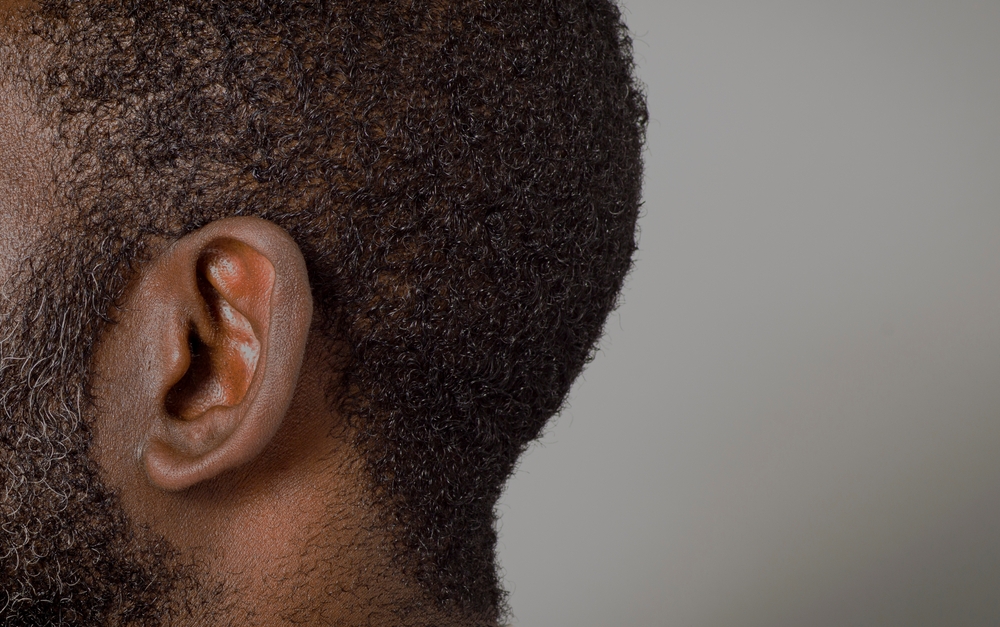That tiny crease in your earlobe you never noticed. The slightly unusual curve at the top of your ear. The way your ears attach to your head. These seemingly trivial features might actually be broadcasting important information about your heart health long before traditional symptoms appear.
While it sounds like something from an old wives’ tale, the connection between ear morphology and cardiovascular risk has been gathering scientific support for decades. Researchers have discovered that certain ear characteristics can serve as external markers for genetic disorders and predispositions that affect heart function.
Let’s explore this fascinating body connection that might help you spot hidden heart risks in the mirror before they become serious problems.
The mysterious diagonal earlobe crease
Perhaps the most studied ear feature linked to heart health is the diagonal earlobe crease, sometimes called “Frank’s sign” after the doctor who first described it in 1973. This distinct diagonal wrinkle runs from the ear canal to the edge of the earlobe at about a 45-degree angle.
What makes this seemingly ordinary skin crease interesting to cardiologists is its remarkable correlation with coronary artery disease. Multiple studies have found that people with this earlobe feature have significantly higher rates of atherosclerosis, the buildup of plaque in arteries that leads to heart attacks and strokes.
The association is strong enough that some physicians routinely check patients’ earlobes during physical examinations. One study following thousands of patients found that those with the diagonal crease had nearly twice the risk of cardiac events compared to those without it.
The biological explanation likely involves shared developmental origins and collagen degradation. The same type of collagen found in your earlobes also exists in your heart’s blood vessels. When genetic factors or aging processes cause this collagen to break down, it can manifest as both the visible earlobe crease and the invisible coronary artery damage.
This physical sign becomes most relevant in people over 50, as both the earlobe crease and coronary artery disease become more common with age. However, when younger individuals display this feature, it might warrant extra attention to heart health and risk factors.
Ear architecture and genetic syndromes
Beyond simple creases, the overall architecture of your ears can reveal genetic syndromes that carry significant cardiovascular risks. These conditions often affect multiple body systems because they influence developmental pathways shared across different organs.
Low-set ears, unusual ear rotation, or abnormal ear size commonly appear in chromosomal disorders like Turner syndrome, a condition affecting females that deletes or damages one X chromosome. People with Turner syndrome face dramatically higher risks of aortic dissection, valve problems, and congenital heart defects.
Ears with pointed tips, resembling those of fantasy elves or the Star Trek character Spock, sometimes indicate Williams syndrome. This genetic condition caused by missing genes on chromosome 7 leads to distinctive facial features including unique ear shapes. More concerningly, it also causes serious cardiovascular problems like narrowing of the aorta and other blood vessels.
The Darwin tubercle, a small pointed projection on the outer rim of the ear, appears more frequently in people with certain genetic variations. While not directly pathological itself, this feature sometimes clusters with genetic profiles that influence cardiovascular development and function.
Even ear attachments provide clues. Ears that connect directly to the head without a distinct gap are called “attached earlobes.” This trait follows simple genetic inheritance patterns and has been linked to certain cardiovascular risk profiles in population studies.
The explanation for these connections lies in embryonic development. Your ears and heart form during the same crucial weeks of embryonic development, influenced by overlapping genetic instructions. Problems in the genetic code affecting one structure often impact the other, creating visible external markers for internal cardiovascular variations.
Earwax type as a metabolic window
Perhaps the most surprising ear-heart connection involves something you rarely see but frequently clean from your ears. Your earwax type, determined by genetics, correlates with certain metabolic patterns that influence heart disease risk.
Humans produce either wet, sticky earwax or dry, flaky earwax based on variations in the ABCC11 gene. This same gene influences how your body processes certain fats and chemicals, affecting everything from body odor to cardiovascular metabolism.
People with dry earwax, more common in East Asian populations, show different patterns of lipid metabolism compared to those with wet earwax, who predominate in Western populations. These metabolic differences potentially influence atherosclerosis development and heart disease progression.
The connection works because the ABCC11 gene produces a transport protein that moves molecules across cell membranes throughout your body, not just in your ears. Variations in this gene affect how efficiently your cells handle certain fats and toxins, with downstream effects on cardiovascular health.
While earwax type alone isn’t a strong enough predictor to guide medical decisions, it represents another piece in the puzzle of how our external features reflect internal physiological processes relevant to heart health.
The developmental origins of the ear-heart connection
To understand why ear features correlate with heart risks, we need to explore the shared developmental pathways that form these seemingly unrelated body parts.
During the first trimester of pregnancy, neural crest cells migrate throughout the developing embryo. These versatile cells contribute to many structures, including crucial parts of both the ears and the heart. The outer ear and parts of the heart’s outflow tracts and septum originate from these same cellular populations.
Genetic factors that influence neural crest cell development or migration can simultaneously affect both ear formation and cardiac structure. This explains why certain genetic syndromes feature both distinctive ear shapes and congenital heart defects.
Additionally, the blood vessels supplying your ears develop from the same embryonic structures as critical cardiovascular components. The first and second pharyngeal arches that form parts of your ear also give rise to portions of your aortic arch and other major vessels.
This shared developmental origin creates a situation where genetic variations affecting blood vessel formation appear in both your visible ear structures and your invisible cardiovascular system. External ear anomalies can thus serve as visible markers for vascular variations that might increase disease risk.
Beyond embryonic development, ongoing cellular processes throughout life connect these systems. The same collagen degradation that causes earlobes to wrinkle also affects arterial walls. Similar inflammatory pathways influence both structures. Even hormone receptors found in ear cartilage respond to the same signals that affect cardiac tissue.
From curiosity to clinical tool
The connection between ear features and heart risks has evolved from medical curiosity to potential screening tool. Researchers now explore how these visible markers might help identify individuals who could benefit from earlier cardiovascular assessment.
Some forward-thinking clinics already incorporate ear examination into cardiovascular risk screening. The advantages are obvious. Checking ear morphology costs nothing, requires no special equipment, causes zero patient discomfort, and takes seconds to perform.
Artificial intelligence systems now being developed can analyze ear photographs to identify subtle features associated with cardiovascular risk factors. These automated systems detect patterns human observers might miss, potentially allowing earlier intervention before heart problems develop.
Insurance companies have shown interest in these physical biomarkers as potential screening tools for policy underwriting. The non-invasive nature and surprising predictive value make ear examination an attractive supplement to traditional risk assessment.
However, medical professionals emphasize that ear features represent just one piece of a comprehensive cardiovascular risk assessment. Family history, blood pressure, cholesterol levels, and lifestyle factors remain the primary focus for heart disease prevention.
What to do if you notice these ear features
Finding a diagonal earlobe crease or unusual ear shape doesn’t guarantee future heart problems, just as their absence doesn’t provide immunity. These physical markers simply suggest potential genetic predispositions that might warrant additional attention.
If you notice the diagonal earlobe crease or have unusual ear architecture, consider mentioning it during your next medical checkup. This observation might prompt your healthcare provider to look more closely at traditional cardiovascular risk factors or recommend appropriate screening tests.
Regardless of ear features, the fundamentals of heart health remain unchanged. Regular exercise, heart-healthy diet, avoiding tobacco, managing stress, and maintaining appropriate weight benefit everyone regardless of genetic predisposition.
For those with family histories of heart disease, these external markers provide another reason to be vigilant about cardiovascular health. Early detection through regular checkups becomes especially important when physical signs suggest elevated genetic risk.
The ear-heart connection reminds us that our bodies function as integrated systems, with visible external features often reflecting invisible internal processes. By paying attention to these subtle signals, we gain valuable information about our health and opportunities for preventive care before problems develop.
So the next time you look in the mirror, take a moment to notice your ears. These often-overlooked features might be telling you something important about what’s happening inside your heart.















